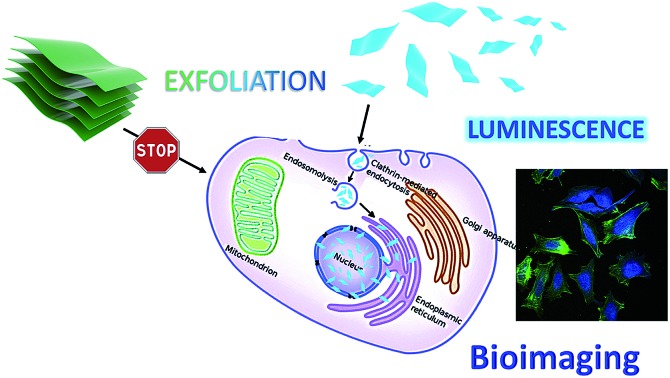- Record: found
- Abstract: found
- Article: found
Covalent organic nanosheets for bioimaging†

Read this article at
Abstract

Abstract
Covalent organic nanosheets (CONs) have attracted much attention because of their excellent physical, chemical, electronic, and optical properties. Although covalent organic nanosheets have widely been used in many applications, there are only a few CONs that have been tested for bio-medical applications. Nanometer sized triazine-based nanosheets were obtained by exfoliating their bulk counterparts in water. The obtained nanosheets were dispersible and stable in water with enhanced photoluminescence properties compared to the bulk material. The nanosheets were biocompatible and non-toxic and showed ability to stain HeLa cell nuclei without additional assistance of an external targeting agent.
Related collections
Author and article information
Notes
†Electronic supplementary information (ESI) available. See DOI: 10.1039/c8sc02842g